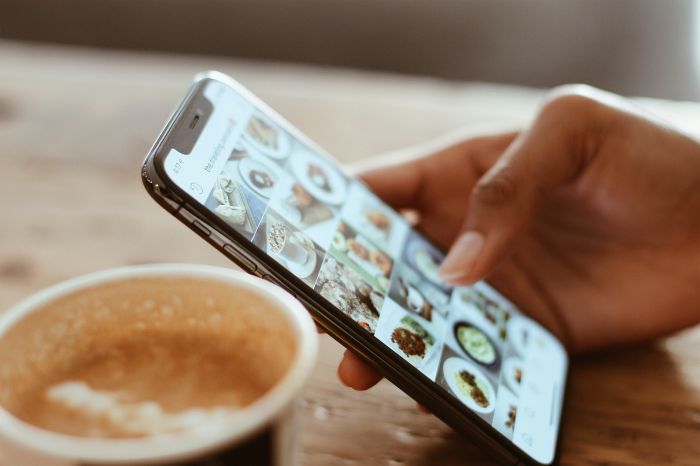[ad_1]

Pexels
It seems like some of us can barely look at a mobile device without smashing its screen. A moment of inattention is all it takes to find yourself picking the shattered remains of your investment off the sidewalk!
While the latest iteration of the iPhone boasts a lightweight, titanium casing, the screen is still vulnerable to scratching and shattering. A screen protector is a minimal investment that can save you from having to replace the crystal on your device (an often time-consuming endeavor). Isn’t it worth going the extra mile? Let’s look at the best types of screen protectors for iPhones and find one that works for you!
An Extra Layer of Protection
In case you think that adding a screen protector to your iPhone is sufficient, I’m here to change your mind. An iPhone is a significant investment, worth protecting from the “oopsies” of life, so the screen protector is one line of defense. But your best move is to back that up with a phone case. Even though Apple is claiming that you won’t need a phone case with the iPhone 15, it’s your phone and your investment, so it makes sense to protect it. And unless you’re independently wealthy, accidentally smashing your iPhone because you didn’t have a phone case is too high a price to pay!
You may not believe that both a screen protector and phone case are necessary. But a phone case serves to protect your device from all types of impact, not just impact affecting the screen. And all damage to screens isn’t caused by direct impact to them but by oblique hits to device corners. Electronic devices have many levels of vulnerability, so protect yours with all the tools at your disposal.
Leading materials for Screen Protectors
Probably the most important factor in the selection of a screen protector is the material it’s made from. Let’s review the most common materials for screen protectors and which of them is the most effective in its protective mission.
Tempered Glass
Tempered glass is generally acknowledged as the best material for screen protectors. The one drawback of this material is that it’s usually made pretty thick. But, some brands create superior very thin tempered glass screen protectors that are ultra strong and feel like they’re barely there. If you want to protect your iPhone from scratches and cracks, it’s the strongest material. Tempered glass can also be treated to protect you against blue light and distracting glare.
TPU (Thermoplastic Polyurethane)
TPU is a plastic that will protect your screen against scratches. Unfortunately, there is a tint to this material and its surface doesn’t tend to be smooth, which some users find unpleasant. It must also be taken into account that TPU is temperature-sensitive, rendering it vulnerable to distortion in high heat. The material also retains heat, which can affect your iPhone.
Ceramic
Ceramic film is a type of ultra-tough coating for iPhone screens, boasting many of the properties of tempered glass. But it’s widely reported that ceramic screen protectors are not scratch-proof, as claimed. Apple’s iPhone 12 Pro’s ceramic screen was, for example, seen to scratch easily. In ceramic’s favor, most users agree that it’s resistant to cracks.
PET (Polyethylene Terephthalate)
PET screen protectors are inexpensive and popular. Light, thin, and smooth, these plastic protectors are unobtrusive. The problem is that PET doesn’t give your phone enough protection and if your screen is curved, a PET protector won’t cover it, edge to edge. While cost-effective, this material offers minimal protection to your iPhone.
Silicone Dioxide/Nano Liquid
This type of screen protector is actually a liquid coating, conforming to all screen sizes, and shapes. The coating is somewhat sticky, making it more difficult to drop your phone and protecting it primarily from dirt and bacteria by creating a barrier. But that’s where the protective ability of nano liquid ends. There is little protection for your screen in the event you drop your device and the silicone dioxide coating can’t be removed. You’ll need to wait for it to wear off to replace it with something more effective.
Things to Consider
While my money’s on tempered glass, TPU and PET are low-cost options that may work, too. But these two plastic options are less damage-resistant.
While most tempered glass brands may slightly alter the appearance of your device due to its thickness, it provides the most reliable protection. And, if you want both sleek and security, go with the phone protection brand that makes an ultra-thin tempered glass screen protector. You’ll also find that tempered glass screen protectors are coated with an oleophobic layer to prevent annoying fingerprints and smudges.
Final Words
To protect your iPhone investment, a tempered glass screen protector is your best bet. While new materials are tried continually, this granddaddy of screen protector materials still wins.
But for total security, take the extra step of purchasing a protective case for your iPhone. And steady as you go! Your best protection plan is keeping your iPhone safe.
[ad_2]
Source link

